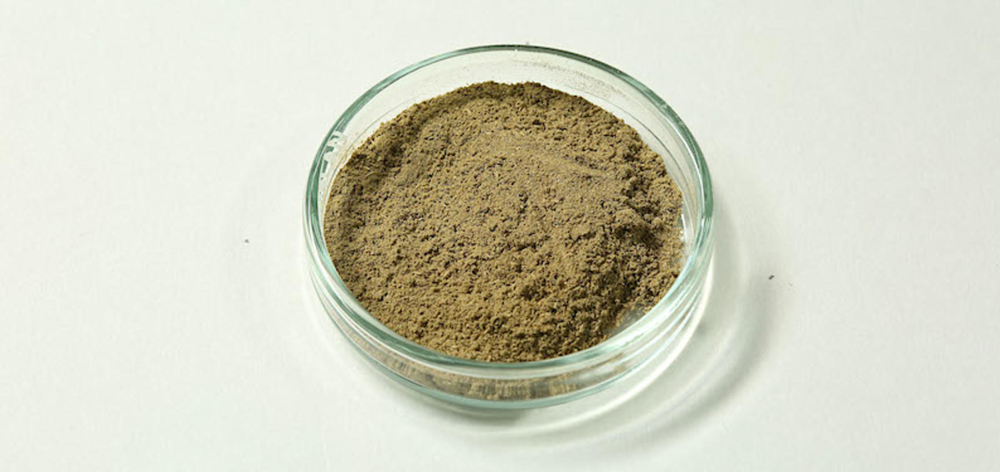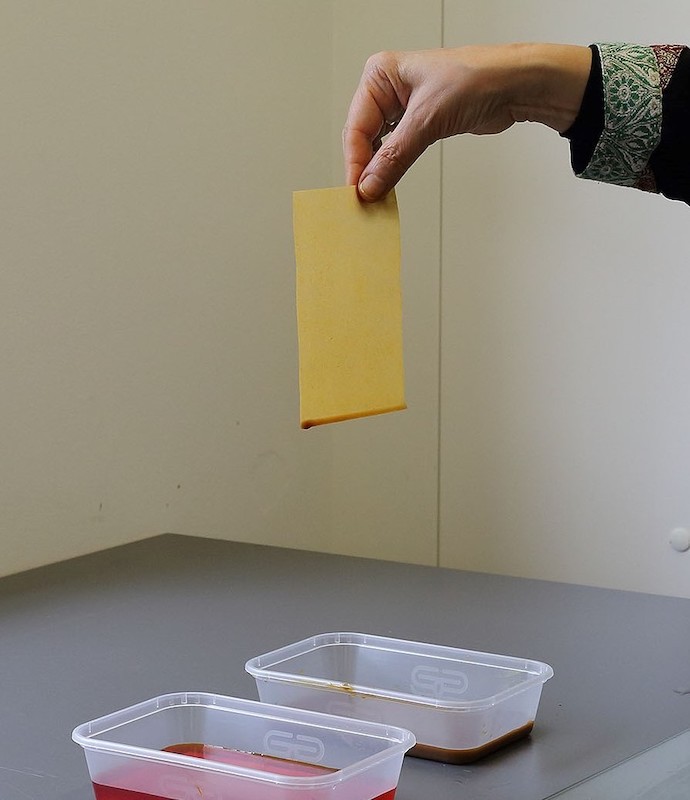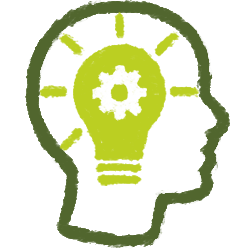Persian recipes: dyeing paper
An intricate mixing and dosing of organic dyes created a profusion of attractive colours. Yellows were obtained with saffron and turmeric; reds with kermes insects, madder roots, wood of trees like brazilwood and safflower petals. Indigo yielded blues whilst henna, with its antiseptic properties, was used to protect paper and add a warm tone to it. Minerals pigments such as verdigris, orpiment and white lead were also used, as well as other additives such as the juice of pomegranate or lemon.
Historical sources from the Timurid, the Safawid and the Qajar eras (15th to 19th century) reveal that books were generally made with dyed paper. Beyond its aesthetic appeal dyed paper was considered beneficial to the eyesight whilst white paper was deemed harmful.
Henna dyed umber paper

Henna, Lawsonia inermis L., is a dye plant used since antiquity. Native to Western India, it can be cultivated in most of the tropical and subtropical regions of the world. The leaves of this shrub are dried and ground into a greenish powder that can be used to dye paper a beautiful orange or dark brown colour with a reddish-orange tone, and impart antiseptic properties.
Experiment
Ingredients
20g henna
200ml water
1:10 ratio
Pour 200ml of boiling water on 20g of henna powder.
Stir, cover and soak for an hour.
Filter the mixture to extract the henna dye. Pour the obtained colourant into a tray.
Dip the paper for 15 minutes or longer depending on the colour required. Take out the paper and dry it in the shade.
 Taking the paper out of the henna dye bath
Taking the paper out of the henna dye bath
Sources
Passage from Majnun Rafigh Heravi’s poetic treatise Adāb al-Mašq (16th century C.E.):
‘Oh wonderful son who have love in you and with that love you desire to practice writing; Go and gain the wonderful paper that is crisp, delicate, smooth and has a melodious surface; The beautiful colour that adorns the calligraphy comes from henna dye and saffron.’
Passage from Resāleh Dar Bayān-e Kāğaḏ Morakkab va Ḥall-e Alvān (15th century C.E.) by an anonymous author:
‘Heat a few clean free unbeaten henna leaves in water for a while. Keep it for one full day and then filter it to get the extract of henna leaves. To get the best result, add 10 sīrs water and one sīr of henna. If more water is added, the colour becomes dull and dusty (mālleh).’

Baharistan – MS Elliot 254: this page was possibly dyed with henna
Bodleian Libraries, UK

PROFILE
The Bodleian Libraries is the library service supporting the University of Oxford.
The mission of the Bodleian Libraries is to provide an excellent service to support the learning, teaching and research objectives of the University of Oxford; and to develop and maintain access to Oxford’s unique collections for the benefit of scholarship and society.
Main Research Source
The article also describes:
- Saffron yellow paper
- Turmeric yellow paper with lemon and ash
- Safflower red, peach and yellow paper with ash and lemon
I was particularly interested in finding out that henna was used to protect paper.

